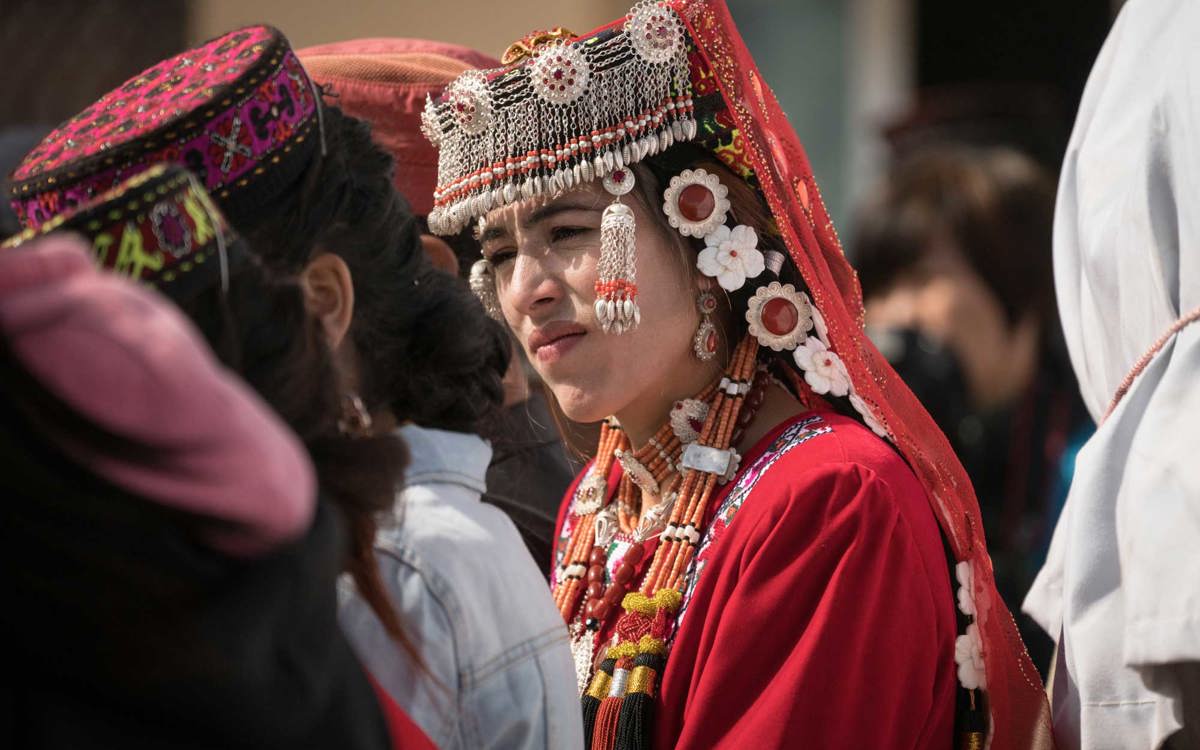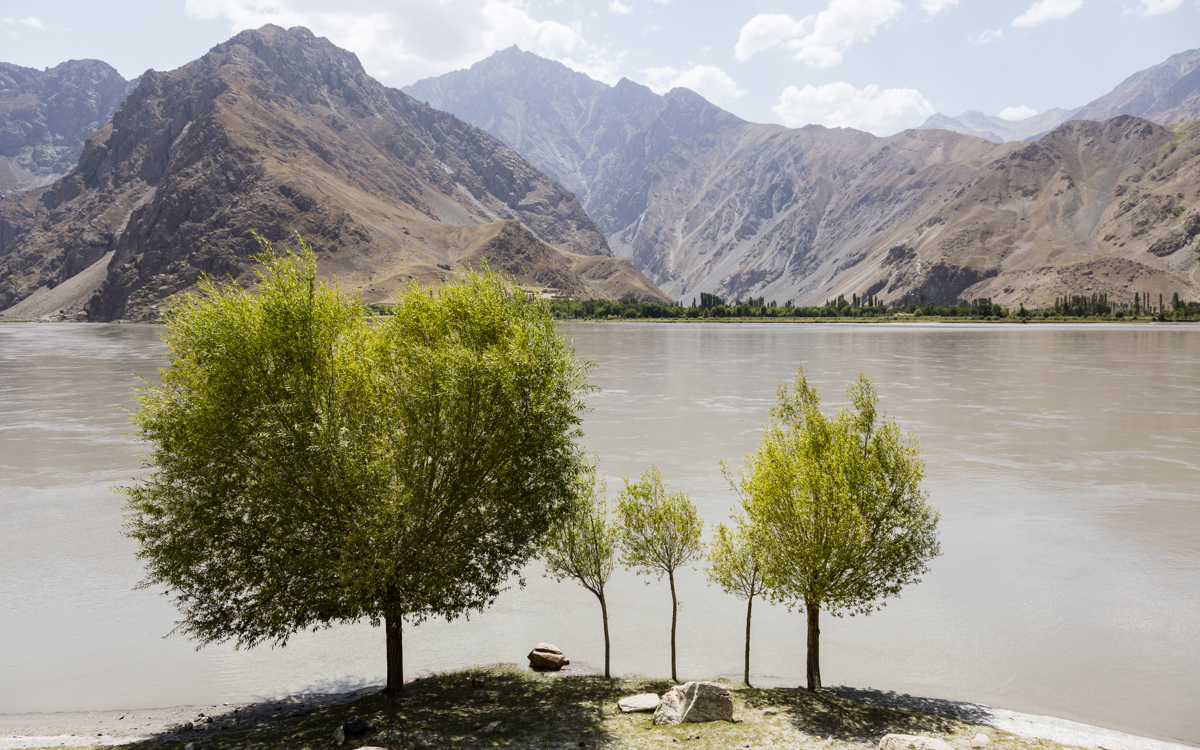At the roof of the world, the linguistic landscape is as intricate as the topography. By Ross Perlin, Marshall Scholar

Fozilbek, standing in a garden of apricot and mulberry trees, is waiting for us. In a workman’s apron, his silver mustache neat, he stands behind a table covered by a spotless tablecloth. A crystal bowl holds fruit from his garden, for us, and there is a spread of traditional tools and toys, all made by him. In a moment he will explain it all in Ishkashimi, his mother tongue, which today is spoken only in the village of Rin, Tajikistan, where we are standing, and by an unknown, but likely very small, number of others across the Panj in Afghanistan.
Speakers like Fozilbek, so supremely poised and prepared, may be unusual, but there is nothing unusual about the deep personal pride he takes in a language that few have heard of and even fewer can understand. All across the Pamirs, a mountainous region in southeastern Tajikistan, we encounter a similarly intense sense of linguistic identity, which is not at all inconsistent with speaking half a dozen different languages, as Fozilbek, like most people in the Pamirs, does.
Our work, supported by a small grant from the National Geographic Society, is to survey this remarkable linguistic terrain, the most diverse in Central Asia and a second ‘roof of the world’ – in some ways parallel to, and geologically connected to, the Himalayas. Our team consists of Husniya Khujamyorova, a Wakhi speaker from the region who now lives in New York and is conversant in all its languages; Nicole Galpern, a videographer; and myself, an eager new student of the Pamiri languages – a fascinating, archaic part of the Iranian language family, and probably as different from Persian as Icelandic is from English.
My engagement with endangered languages was sparked in China, when I was studying very not-endangered Mandarin, and began in earnest with an MA at SOAS University of London, made possible through a Marshall Scholarship. The university’s pioneering degrees in language documentation and field linguistics have helped to forge a new field around the study of endangered languages. SOAS, which is also home to the fieldwork-funding Endangered Languages Documentation Programme and the associated Endangered Language Archive, is still one of the few major centres anywhere in the world supporting work on the world’s 7,000+ languages that are in danger of disappearing in the next few centuries.
What had brought us to the Pamirs, in a word, was Husniya. At the Endangered Language Alliance in New York, we collaborate primarily with speakers and communities living in the hyperdiverse metropolis all around us. Since 2010, we had been working with Husniya and New York’s small diaspora community of Wakhi, Shughni, Bartangi, and Roshani speakers, recording folk tales, songs, and oral histories; building up lexicons; digitising rare old source materials; and delving into the grammar. Now, by undertaking more ‘traditional’, furthest-valley-style fieldwork, we hoped to deepen what we had already begun: recording a wider variety of genres, with a broader spectrum of speakers, in all the region’s languages.

The result, in addition to everything we learned and experienced, was nearly 40 hours of video recordings, in 11 languages and dialects, with some 70 different speakers. It will take a long time, but our aim is to edit, transcribe, translate, and disseminate as much of this as possible, not only for a scholarly audience but also, more importantly, for Pamiri people, who have been watching our videos online in the thousands.
We met and initiated collaborations with local scholars, learning about the different but not unrelated challenges faced by each language – from tiny Ishkashimi up to the safer Shughni, which has a few hundred thousand speakers, a small literature, and wider regional currency. Crossing into China, meeting speakers from Pakistan, and seeing recordings from Afghanistan, we also began to grasp the wider regional picture of these languages, spoken in remote but contiguous areas divided by politics ever since the Great Game brought the British and Russian empires face to face on the Panj river – today’s Tajik-Afghan border – more than a century ago.
Endangerment is no accident. It is a historical result faced by peoples made marginal, if not massacred and dispossessed, by empires, nation states, and economic systems beyond their control. Pamiri fates have varied under Czarist, Soviet, and now Tajik rule, but the languages, coupled with an extraordinary multilingualism, are holding on, carrying with them a whole world of knowledge, literature, and culture. To support in some small way a community taking its own road to the future, maintaining in the process some degree of access to the past, was the purpose of our visit. Fozilbek was laying it all out for us – our first task was to listen.
Ross Perlin was awarded a Marshall Scholarship in 2005 to study an MA in Language Documentation and Description at SOAS University of London, UK, and an MPhil in Classics at Corpus Christi College, Cambridge. He is currently co-director of the Endangered Language Alliance – a non-profit organisation with a unique focus on endangered languages in urban areas.
Images (from top): Simon Sun at Unsplash; Frizi at iStock
